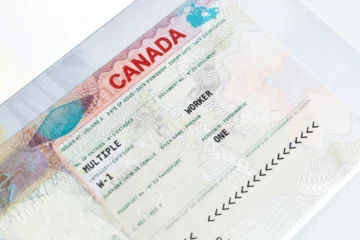Table of contents
For many students, studying in Canada has become even more attractive, thanks to the Student Direct Stream. The Student Direct Stream program launched in 2018 is a replacement to the former Student Partners Program (SPP). Most of Canada’s international students have hailed from India, China, and Korea. With the expansion of the program to 14 SDS participating countries, applying to study in Canada is now quicker for students from eligible Asian and African, as well as Central and South American countries.
Those who reside in the accepted countries listed below, and who can demonstrate upfront that they have the financial means and linguistic ability to advance academically in Canada, could be eligible for shorter processing timeframes under the Student Direct Stream. The SDS processing time in Canada is typically 20 calendar days instead of a few months.
Are You Eligible for the Student Direct Stream (SDS)?
To be eligible for expedited visa processing through the SDS, you must live outside of Canada at the time of application, and be a legal resident living in one of the following 14 SDS participating countries.
Antigua and Barbuda
Brazil
China
Colombia
Costa Rica
India
Morocco
Pakistan
Peru
Philippines
Senegal
Saint Vincent and the Grenadines
Trinidad and Tobago
Vietnam
If you are living anywhere other than in one of these countries – even if you are a citizen of one of the countries listed above – you must instead apply through the regular study permit application process.
You must have a Letter of Acceptance (LOA) from a Designated Learning Institution (DLI), and provide proof that the tuition for the first year of study has been paid. DLIs are universities, colleges, and other post-secondary educational institutions that have government authorization to accept international students. Proof may be in the form of a receipt from the DLI, an official letter from the DLI that confirms payment of tuition fees, or a receipt from a bank showing that the tuition fees have been paid to the DLI.
You will also need your most recent secondary or post-secondary school transcript(s) and your language test results. SDS language level requirements are higher than those required for standard study permits. Your language test result must show that you either have a 6.0 or higher in each skill (reading, writing, speaking and listening), or a Test d’évaluation de français (TEF) score that is equal to a Canadian Language Benchmark (CLB) score of 7.0 or higher in each skill.
Your Guaranteed Investment Certificate (GIC)
Submitting a Guaranteed Investment Certificate (GIC) to show that you have an investment account with a balance of $10,000 CAD or more is a prerequisite for applying for your study visa through the Study Direct Stream. Many students receive $2,000 CAD when they arrive in Canada, and the remaining $8,000 in instalments over the school year.
A GIC is a Canadian investment with a guaranteed rate of return for a fixed period of time. The following financial institutions offer GICs that meet the criteria.
Bank of Beijing
Bank of China
Bank of Montreal (BMO)
Bank of Xian Co. Ltd.
Canadian Imperial Bank of Commerce (CIBC)
Desjardin
Habib Canadian Bank
HSBC Bank of Canada
ICICI Bank
Industrial and Commercial Bank of China
RBC Royal Bank
SBI Canada Bank
Scotiabank
Simplii Financial
TD Canada Trust
The bank that issues the GIC must confirm that you bought a GIC by giving you one of the following:
- a letter of attestation
- a GIC certificate
- an Investment Directions Confirmation or
- an Investment Balance Confirmation
The bank will hold the GIC in an investment account or a student account that you won’t be able to access until you arrive in Canada. You will need to confirm your identity before they release any funds to you. An initial lump sum will be issued once you identify yourself upon arriving in Canada. The remainder of the funds will be issued in monthly or bi-monthly instalments over the 10 or 12-month school term.
Medical Exams and Police Certificates
Depending on where you’re applying from, or your field of study, you may need to obtain a medical exam or police certificate, and include these with your application.
You may need a medical exam if you’ve lived or travelled in certain countries or territories, for a period of six or more months in the year before you travel to Canada. If you will be studying or working in the health field, primary or secondary education, or in child or elder care, you will most likely need to have a medical exam. If you are required to get a medical exam, you must see an IRCC-approved doctor.
The instructions provided by your visa office will tell you if you need to obtain a police certificate. If you’re an International Experience Canada (IEC) candidate, in most cases you’ll need to provide a police certificate when you submit your work permit application. If you are requested to give your fingerprints for a police certificate, this isn’t the same as giving your fingerprint and photo biometrics for an application, and you will have to submit them again.
Applying for Student Direct Stream (SDS)
There’s no paper application form for the Student Direct Stream, so you need to apply online for your study permit. To begin, access ‘Guide 5269 – Applying for a Study Permit outside Canada‘.
From the ‘Apply for a study permit through the Student Direct Stream’ page select your country or territory and click ‘Continue’ to receive additional instructions and access the link to your regional ‘Visa office instructions’.
It’s recommended that you have a scanner or camera handy, to create electronic copies of your documents. You will also need a credit or debit card, to pay your biometric fee. Most applications will ask you to give your biometrics, requiring you to pay the biometric fee when you submit your application.
After You Apply for the Student Direct Stream (SDS)
Once you’ve paid your fees and submitted your application the Government of Canada will send you a letter. If you didn’t pay the biometrics fee yet, a letter will ask you to do this first, before you receive your instruction letter. You will need to bring the letter when you give your biometrics, with your valid passport. You will have up to 30 days to give your biometrics in person.
Once the government receives your biometrics, they will be able to process your study permit application. If you meet the eligibility, your Student Direct Stream application will be processed within 20 calendar days of receiving your biometrics. If your application doesn’t meet the eligibility for the Student Direct Stream, it will be reviewed as a regular study permit instead.
If your application is approved, you will be sent a port of entry letter of introduction. This letter is not your study permit. You will need to show the letter to the officer when you arrive in Canada. You will also receive an electronic travel authorization (eTA) or a visitor/temporary resident visa. Your letter of introduction will have information about your eTA.
Your eTA will be linked electronically to your passport and will be valid until your passport expires, whichever comes first. If you need a visitor visa, you will be asked to send your passport to the nearest visa office so your visa can be attached to it. Your visa will be in your passport and it will specify whether you can enter Canada once, or multiple times. You must enter Canada before the expiration date on the visa.
Before you travel to Canada, confirm that your Designated Learning Institution (DLI) is on the list of those with approved COVID-19 readiness plans.
If all goes smoothly, you could be studying at a Canadian college or university in less than a month.
Getting Your Study Permit
ArriveCAN is free and secure and is the official Government of Canada platform for providing your information when entering Canada. Download the latest version of ArriveCAN or click ‘update’ in the Apple App Store or from Google Play.
You will need to submit your information within 72 hours before you arrive in Canada. Once you submit your information through the ArriveCAN app, a receipt will be displayed and emailed to you.
When you arrive at the port of entry, an officer will confirm that you meet all of the requirements for entering Canada, and will then print your study permit. Double-check that all of the documents you will need to enter Canada are with you when you board the plane.
Permanent Residency
The ability for students to remain in Canada, under the Express Entry application process, is one of the primary reasons the Student Direct Stream has been so successful in drawing record numbers of international students. Express Entry is an online system that manages applications for permanent residence from skilled workers. International students may work in Canada both during and after their studies while planning their permanent residency.
Applicants are ranked in the Express Entry pool using a points-based system. Graduates of Canadian institutions may earn more bonus points for their studies under Express Entry than applicants who studied outside of Canada.
Government of Canada Resources:
Student Direct Stream: About the process
Student Direct Stream: Who can apply
Student Direct Stream: How to apply
Student Direct Stream: After you apply
Application to Study in Canada, Study Permits
Use ArriveCAN to enter Canada
It’s important to note that eligibility requirements may vary, and it is essential to consult the official Canadian government website or a qualified immigration professional for the most up-to-date information.



0 Comments